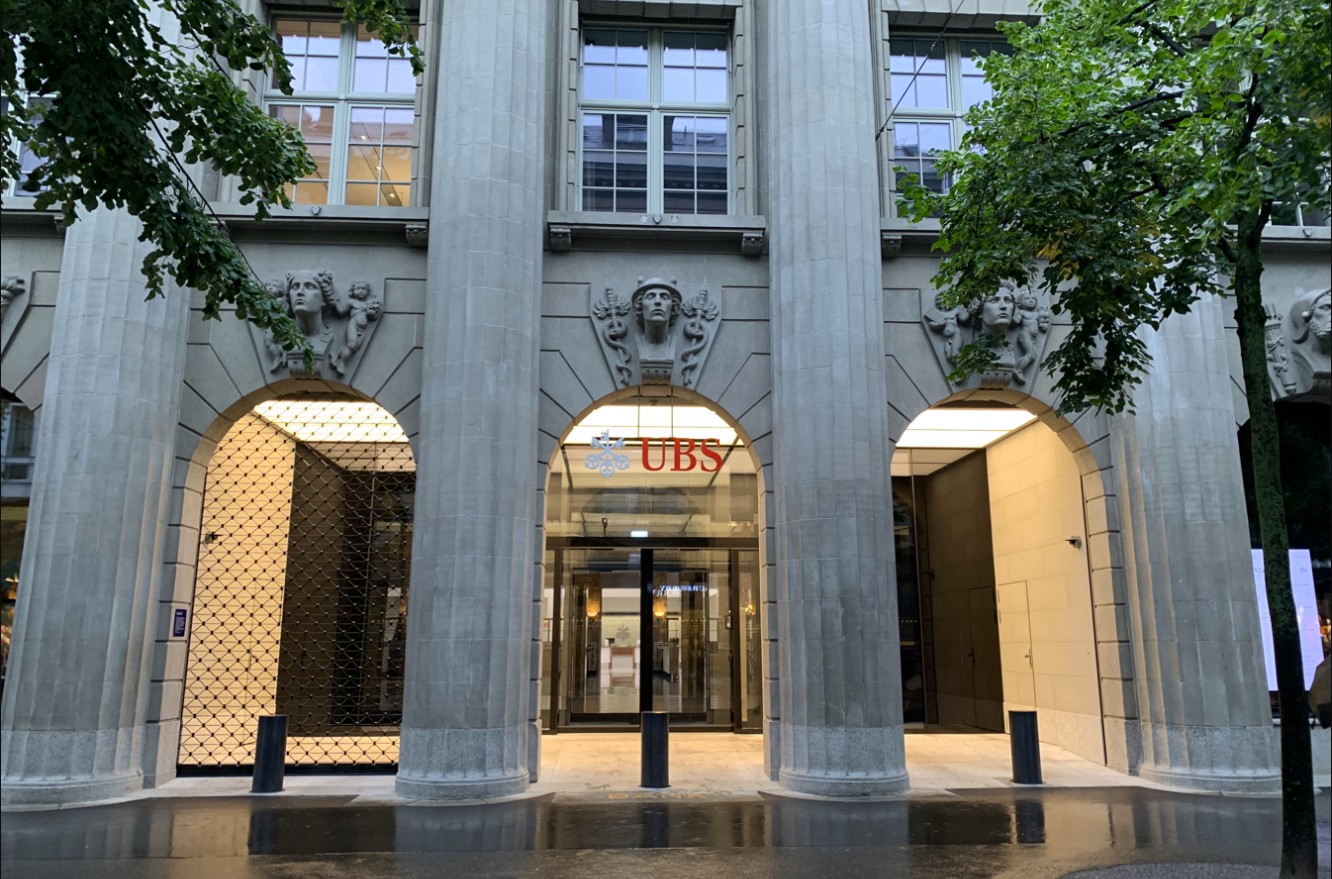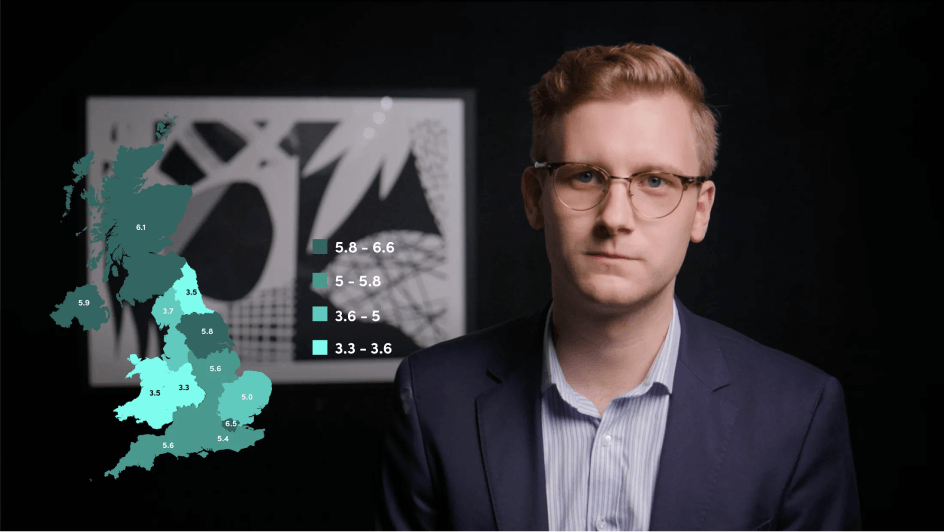
Facing up to the new economic reality

Prasad Gollakota
20 years: Capital markets & banking
How finance professionals can stay ahead of the curve

Our data visualisation shows policy uncertainty is at record highs — but with the right knowledge and tools, financial decision-makers can turn volatility into a competitive edge.
Take a moment and think about what, in your opinion, has been the most uncertain moment in modern economic history?
You might think the peak was struck during the COVID-19 pandemic. Or perhaps it was during the global financial crisis. But according to the Global Economic Policy Uncertainty (EPU) Index, the spring of 2025 has eclipsed them all.
In this striking data visualisation,we show how the volatility index, built from newspaper analysis across 21 major economies and weighted by GDP, hit 548 in March 2025, its highest level on record. In the US, it surged past 700. This is nearly five times the long-term global average. These figures don’t just mark a datapoint, they signal a new economic reality.
Why uncertainty matters, especially for finance
Uncertainty is more than a feeling. It’s a measurable economic force with real-world consequences.
Research from the European Commission shows that elevated policy uncertainty suppresses GDP growth, especially through reduced business investment. Their model-based analysis shows that an average-sized exogenous uncertainty shock leads to a 0.45 percentage point drop in GDP growth across the euro area in a single year. The effect is especially severe on corporate investment, with a drag of -1.2 percentage points post-pandemic.
These effects are not equally distributed:
- Italy and Spain show the highest sensitivity to uncertainty in both consumption and investment.
- Germany sees a more muted response, despite higher shocks.
- Overall, the drag on investment is significantly larger than that on private consumption.
For finance professionals, this is more than macroeconomic trivia. Investment decisions, capital allocation, hiring, and long-term planning all hinge on assumptions about policy stability. When the landscape shifts, assumptions and ultimately decisions need to shift with it.
Why paralysis isn’t an option
As uncertainty rises, so does the perceived value of waiting. Shifting external forces affect confidence, which hinders action — the result being that firms delay irreversible decisions when outcomes are unclear. But waiting comes with a cost. As competitors act, delay becomes a lost opportunity.
Inaction also exacerbates risk:
- Capital projects stall
- Hiring slows
- Strategic initiatives, like digital transformation or sustainability transitions, are deferred or shelved
The result? A self-reinforcing cycle where risk aversion leads to strategic stagnation.
Opportunity in uncertainty
Here’s the truth: uncertainty is not going away. It has become the norm. As you can see from the graphic, uncertainty spikes are becoming more frequent. Since 2020, we have experienced the COVID-19 pandemic; conflict in Russia/Ukraine, Israel/Gaza (and now Israel/Iran); more policy unpredictability with the reelection of Donald Trump to the US Presidency; and, with the new administration, on-going trade-tariff uncertainty.
The data points to structural change. This is a world in which we need to find ways to navigate rolling, overlapping volatility — a theme we explore in more depth in our recent insight, Trade tariffs: Operating within the turbulence.
From a business leadership perspective, this shifts the conversation. The most resilient organisations will not be those that try to ride out the storm, but those that build the muscle to operate confidently within it.
Boards that proactively revisit assumptions, model multiple scenarios, and communicate clear pathways forward will outperform those that wait for a mythical moment of clarity.
Investing in people is investing in resilience
Uncertainty might cloud the path forward, but it also sharpens the focus on what matters most: the ability to adapt, act, and lead.
This moment presents a rare opportunity for financial institutions to invest in their greatest asset: their people.Because the organisations that will thrive tomorrow are those preparing today. Not by waiting for the skies to clear, but by learning how to navigate in the fog.
But the question for learning leaders and financial professionals is this: are your people equipped with the skills to think critically, respond strategically, and move decisively in this environment? Because with the right learning, we can achieve far more than we ever thought possible.
Finance Unlocked: Clarity in complexity
This is where Finance Unlocked delivers real impact.
We don’t just teach finance. We demystify its complexity and translate it into actionable insights and capabilities that empower decision-making under pressure — taking learning from the foundations of finance right up to the specialist knowledge needed to perform more effectively at the most senior levels. Delivered by the world’s top financial experts, our learning pathways help finance professionals:
- Understand the implications of geopolitical, regulatory, and macro-economic shifts on financial decision making.
- Navigate volatility with clear knowledge of different markets.
- Break down organisational silos to ensure holistic decision-making.
- Build financial fluency that enables cross-functional innovation.
Our platform offers tailored, effective learning that goes beyond compliance and fundamentals. It’s designed for the future-shaping workforce — financial professionals who want to lead through the inevitable changes that lie ahead.

Prasad Gollakota
Share "Facing up to the new economic reality" on
Latest Insights

UBS and Switzerland: Capital hikes are not the right tool for the job
15th October 2025 • Prasad Gollakota

Trade deals & trade wars: The regional impact
23rd May 2025 • Adrian Pabst and Eliza da Silva Gomes

Unpacking the truth behind U.S. Treasury market volatility
17th April 2025 • Prasad Gollakota



























